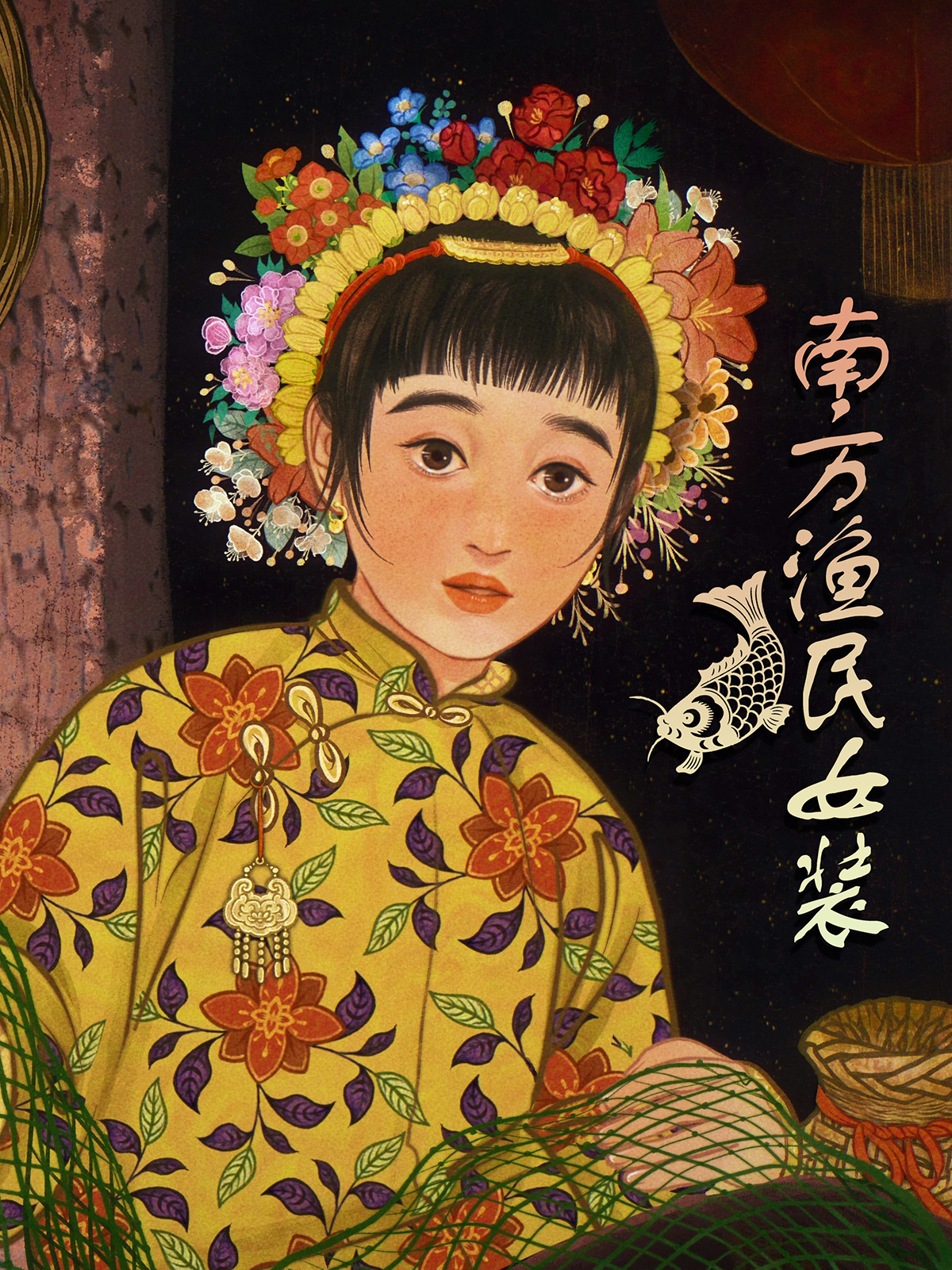Traditional Fisherwoman's Dress of Southern China: 蟳埔 | 梅州 女服饰
Music: Dawnstar Theme
Art by 陸曼陀 Danling★Lu
Nestled amidst the dotted villages of southern China, an arresting sight still awaits those who venture into its intricate warrens of stony village walls. Here, time stood still, as women traverse the humble streets dressed in the vibrant garb of bygone eras. Their traditional dresses, meticulously stitched in the traditional style to honor the living past, serve as a visual portal into China's recent centuries.
A fisher girl of Xunpu 蟳埔 Xunpu Village of Quanzhou City, in southern China's Fujian Province. The women here are distinguished by their bright flowery hairstyles, traditional dresses and wooden sabot shoes. Adding to their attires are their sumptuous hairpins and delicate flowers. The women here are an intricate fabric of the local economy and perform the job of stitching fishing nets and shucking oysters for drying. As far back as the Tang dynasty, Quanzhou was the starting point of the ancient maritime silk road.
Quanzhou proper was established under the Tang in 718 and it still housed the tombs of some of the first Islamic missionaries in China. It was visited by both Marco Polo and Ibn Battuta; and Buddhist, Hindu, Muslim, Catholic missionaries, Arab, Persian, and Japanese traders all frequented this port.
Music: The Tea House
MEIZHOU- GUANGDONG
Traditional fisherwoman's dress in Meizhou 梅州- Guangdong Province. Her hair is distinguished by its floral pins and the distinctive swept back "Sail Hairstyle." According to local tradition, "Sail Hairstyle, sea colored dress, red and black trousers will keep one safe." Much of this garment and its corresponding hairstyle is related to the traditional Chinese goddess of the sea: Mazu. The blue top represents the sea, and the red and black trousers represent auspiciousness and longing.
According to legend when Mazu (before her deification) was 18, her parents wanted to arrange a marriage for her. Mazu locked herself in the house for three days, and when she came out, she tied her bun, expressing her wish to instead dedicate her life to the sea.
HUI'AN- FUJIAN
A maiden of Hui'an in traditional attire consisted of a colorful floral headscarf and a conical hat 斗笠 Dǒulì decorated with vibrant flowers. Typical Hui'an maidens wear short cyan jackets and skintight black hiphuggers which flare out at the legs and they cover their heads with colorful scarves and conical hats.
Thank you to my Patrons who has contributed $10 and above: You made this happen!
➢ ☯ MK Celahir
➢ ☯ Muramasa
➢ ☯ Thomas Vieira
➢ ☯ Kevin
➢ ☯ Vincent Ho (FerrumFlos1st)
➢ ☯ BurenErdene Altankhuyag
➢ ☯ Stephen D Rynerson
➢ ☯ Michael Lam
➢ ☯ Peter Hellman
➢ ☯ SunB





















Comments
I really enjoy your site, it is so detailed in explanation and beautifully presented.
I apologise that this question isn’t about the current article (feel free to move it if required/possible) but I would be extremely grateful if you could help me with something that has eluded me for over a decade now. I have asked scholars of Chinese history at the universities I attended, asked Chinese people, but cannot get a definitive answer.
There is a kind of scarf worn over armour that covers the shoulders, that can be seen in a number of images of Song era armour. It is also frequently shown in depictions of Sun Wukong. It’s more than just a neck scarf, it looks very similar to the effect we see nowadays when someone wears a cardigan around their shoulders tied by the sleeves, and covers the shoulder and upper back.
Is there a specific Chinese term for this garment? Is it some sort of garment intended for warriors, and with a specialised name? If not, do you know which hanzi would be most pertinent to describing it? I’ve searched a number of scarf/shawl type words but when I use them in Google image searches, nothing really turns up looking like this specific scarf in its military context.
I would be extremely grateful if you or anyone reading this can solve this mystery!
I know of it (that it is frequently worn) but not its name, sorry to say. But they were regularly worn yes. In normie circles it is also merely referred to as a scarf.
If I ever stumble upon its proper name I will drop the comment for it here.